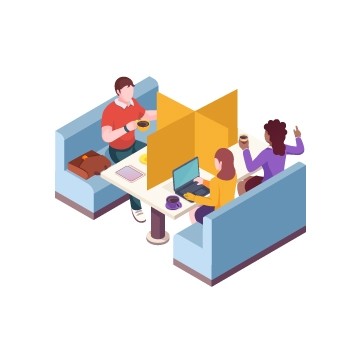
Is All Well at Work? Revisiting Wellness and Workplace Design as We Return to the “Next Normal”
By Robin Weckesser, CEO, a3 Workplace Strategies
San Jose, August 2020—Even well before the coronavirus outbreak, organizations started to appreciate the importance of wellness programs in their workplace. Today, of course, there are new guidelines for office safety and wellness as workers in the Bay Area and beyond start to return to work. Today, wellness and health safety have moved to the forefront, and more than ever, employers need to ensure the well-being of staff and visitors.
There has been an ongoing quest for a competitive edge in workplace design as companies strive to support attraction, retention, brand, and culture. And this has now become more of a challenge as a result of the pandemic. Even as organizations prepare a workplace response to the pandemic, the strategic role of the workplace has actually not changed; rather, it is evolving. That said, I envision that the role, purpose, and use of the workplace will be a top priority more than ever before. To make this happen, organizations are working with architects and project managers to define the process and lead the design thinking that will deliver alternative workplace solutions not considered before the pandemic.
Indeed, we are witnessing an acceleration of change in the work process unlike any time before. Are the days of densification for increased interaction and collaboration in the office gone, at least for the short term? To some extent, I believe this is true now and possibly forever. At the same time, we need to realize that employees will always need to return to the office at some point, and there is still a need to promote collaboration that is enabled by a modified open office environment.
Taking a New LEED
For years, companies concerned about sustainability and green office initiatives have considered LEED (Leadership in Energy and Environmental Design) certification programs. Today, how the workplace functions are being viewed through a different lens. A lens that brings into focus not only the building but, moreover, the well-being of those who occupy it.
Again, health and safety is at the chief challenge facing corporate real estate teams across the country. Together, we must address the questions of when to return to work, how to ensure the workplace is safe, and what specific response plans we need to roll out.
At a tactical level, we know that “next normal” solutions include reconfigured workstation layouts, staggered workdays, touchless access points, hands-free restroom fixtures, temperature monitoring, tracking, tracing, workplace distancing, HVAC system reviews, filtering system upgrades, hand sanitization stations, and workplace circulation guidance. The critical challenge is: How do you communicate with the staff so they feel comfortable they are returning to a safe environment?
Physical and Fiscal Health
According to the World Green Building Council, staff costs account for up to 92% of business operating expenses. With an eye on the bottom-line, corporate real estate executives are becoming acutely aware of how wellness programs are essential to morale, health, safety, and productivity, all of which contribute to ROI.
At the heart of this challenge, it important to remember that “one size doesn’t fit all.” Since we’re all in this together, it makes sense for organizations to perform due diligence before starting new initiatives, and that includes discovering what others are doing and what best practices are being established.
Back to the fundamental, over-riding need for communication, organizations must decide what’s best for their culture—for example, town halls, video productions, Zoom team meetings, email, graphic notices, etc. The key is that the staff needs to know what’s been done, what the look-ahead plan is, and what their role is. Management needs to “over-communicate”: Tell them, tell them again, and tell them what you told them. The message needs to come from all levels of the organization, and staff needs to buy into the new direction and become part of the solution.
More than ever, to stay competitive in today’s marketplace, the health and well -being of the staff is at the top of the list in workplace design. It all starts with a comprehensive re-entry plan that puts people at the center of the workplace and workplace design process.
So let’s plan ahead and address new return-to-office guidelines while we revisit tried-and-true wellness programs. Let’s be safe and be well!
Robin Weckesser is the President of a3 Workplace Strategies, a workplace solutions consulting group based in San Jose and serving companies throughout the United States and worldwide. The firm provides a full range of project management and facilities management services, including strategic planning; change management; site selection; design, construction, and relocation oversight; space programming; open office/collaborative environments; and wellness consultation.
For more information, visit a3workplacestrategies.com or email Robin at rweckesser@a3workplace.com.




Sorry, the comment form is closed at this time.